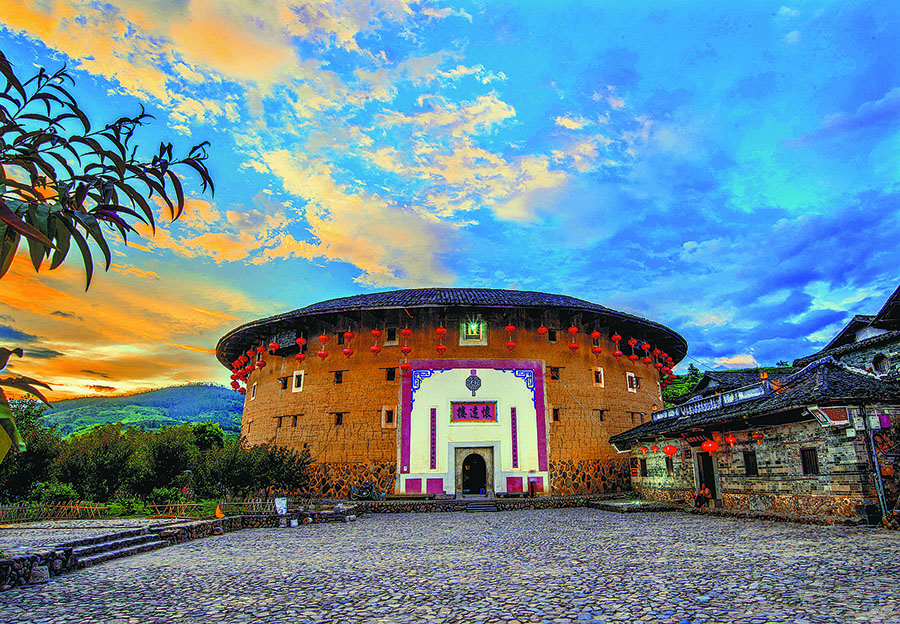A legacy that builds on home comforts


Take the Huaiyuanlou in the county as an example. The four-story, 14.5-meter-high tulou on the UNESCO list had dozens of people spend more than 4 years mixing soil, setting up tools, doing measurements, ramming the earth, laying pinewood, and patting the walls.
"Everyone had clear responsibilities, and each step was well-organized. To ensure the solidification and drying of the walls, they would pause construction for a year after completing each layer of ramming," Jian says.
He emphasizes that the enduring strength, and no signs of peeling, in the walls of the Huaiyuanlou are attributed to the meticulous execution of each step during the construction.
"Hundreds of pinewood pieces were used and a large pit was dug nearby to source the raw soil."
The significance of the earthen structures has also motivated locals to tap into the rich tulou resources and repurpose some that were in a poor condition.
At Tianzhong village in Nanjing, a total of seven tulou underwent restorative construction by experienced craftsmen starting in 2014.
"We did our best to preserve the historical styles and features of those tulou," says Ye Fan, chair of the company in charge of the renovation.
The idea was to "excavate the profound historical and folk culture, and retain the soul and foundation of the earthen buildings," Ye says.
The move has helped the village pack in more than 300,000 traveler visits and enabled local households to leverage opportunities in the homestay and catering sectors.
Many local young people have come back to start up their own business.
Huang Zhihui was one of the first to quit his big-city job and return home after tulou began to receive widespread attention in 2008.
He runs a website that offers tourists curated routes, reception, transportation and accommodation in Nanjing.
He has also led his team to develop the highest homestay in not only tulou scenic spot, but the county.
"With the development of tourism, people's expectations for living conditions have become increasingly high," Huang says.
The homestay is in the fashion of a square tulou with campus elements, and, as well as learning ramming techniques, farming and fruit picking experiences are available for visitors.
"I hope that through the hospitality provided by the homestay and interactions with the tourists, they can truly experience the friendliness of the local people. I want to give them more opportunities to understand and immerse themselves in the rich local culture and customs associated with the earthen buildings," Huang says.
He has created songs about tulou to popularize their charm and he often gets together with friends in the homestay business to discuss development of the industry.
For Zhang, the positive changes happening in his hometown over the years have charged him with excitement and forged a sense of responsibility.
He says he is excited about tulou being recognized by the world and the Hakka construction craft being named a national intangible cultural heritage in 2011.
"As an inheritor, I feel more motivated to take a lead in recording, inheriting and displaying this ancient craft," he says.























